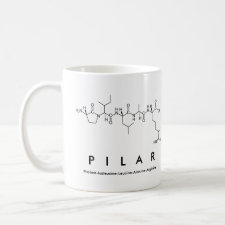
Authors: Paniagua-González G, Fernández-Hernando P, Durand-Alegría JS
Article Title: A MIP-based flow-through fluoroimmunosensor as an alternative to immunosensors for the determination of digoxin in serum samples.
Publication date: 2009
Journal: Analytical and Bioanalytical Chemistry
Volume: 394
Issue: (4)
Page numbers: 963-970.
DOI: 10.1007/s00216-008-2584-9
Abstract: Abstract This work reports a comparative study of two automated flow-through fluorosensors for the determination of digoxin in serum samples: an immunosensor with an anti-digoxin polyclonal antibody as the reactive phase permanently immobilised on controlled-pore glass and a sensor with a selective reaction system based on a methacrylic molecularly imprinted polymer (MIP) synthesised by bulk polymerisation. The variables affecting the sensitivity and dynamic range of the sensors (e.g. the carrier and elution solutions, flow rates, pH and reagent concentrations) were optimized, and the binding characteristics of their reactive phases were compared in a competitive fluorescent assay. Digoxin was reproducibly determined by both sensors at the milligram per litre level (detection limit?=?1.20?×?10?3 mg L?1 and RSD?=?4–7% for the immunosensor; detection limit?=?1.7?×?10?5 mg L?1 and RSD?=?1–2% for the MIP sensor). No cross-reactivity with digoxin-related compounds was seen for either sensor at a digoxin/interferent ratio of 1:100. The lifetime of the immunosensor was about 50 immunoassays; its shelf life, when unused, is about 3 months. The lifetime of the MIP sensor was over 18 months. Both sensors were used to determine the digoxin concentration of human serum samples with satisfactory results
Template and target information: digoxin
Author keywords: Digoxin, Permanent immobilisation, molecular imprinting, Flow-through fluorosensor, Serum analysis



Join the Society for Molecular Imprinting

New items RSS feed
Sign-up for e-mail updates:
Choose between receiving an occasional newsletter or more frequent e-mail alerts.
Click here to go to the sign-up page.
Is your name elemental or peptidic? Enter your name and find out by clicking either of the buttons below!
Other products you may like:
 MIPdatabase
MIPdatabase









